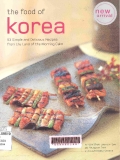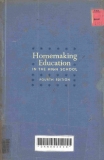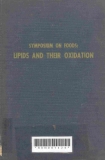Tài liệu Thư viện số
- Giáo trình SPKT (417 )
- Luận văn, luận án (2865 )
- Đồ án, khóa luận tốt nghiệp (9569 )
- Tài liệu tham khảo (1350 )
- BC nghiên cứu khoa học (1589 )
- Kỷ yếu hội thảo (12 )
- Tạp chí khoa học (62 )
- Luật (349 )
- Cơ khí chế tạo máy (2344 )
- Điện - Điện tử (4378 )
- Cơ khí động lực (1242 )
- Xây dựng - Kiến trúc (3233 )
- Thực phẩm, Môi trường (1087 )
- Công nghệ thông tin (3074 )
- Kinh tế - Quản lý (4149 )
- In - Truyền thông (383 )
- CN May - thời trang (832 )
- Nghệ thuật - Ẩm thực (1516 )
- Nông - Lâm - Ngư Nghiệp (763 )
- Y học - Sức khỏe (620 )
- Khoa học xã hội (3535 )
- Lịch sử - Địa lý - Du lịch (492 )
- Khoa học tự nhiên (2112 )
- Văn học (2585 )
- Ngôn ngữ (4289 )
- Khoa học ứng dụng (408 )
- Thông tin Tuyển sinh (61 )
- Thông tin -Thư viện (418 )
- Thể loại khác (1376 )
Danh mục TaiLieu.VN
- Mẫu Slide Powerpoint
- Kinh Doanh Marketing (39320)
- Kinh Tế - Quản Lý (30571)
- Biểu Mẫu - Văn Bản (123435)
- Tài Chính - Ngân Hàng (23744)
- Công Nghệ Thông Tin (56521)
- Tiếng Anh - Ngoại Ngữ (9738)
- Kỹ Thuật - Công Nghệ (44193)
- Khoa Học Tự Nhiên (27343)
- Khoa Học Xã Hội (43227)
- Luật - Kinh tế luật (6560)
- Văn Hoá - Thể thao - Du Lịch (71283)
- Y - Dược - Sức Khoẻ (83234)
- Nông - Lâm - Thuỷ sản (16418)
- Luận Văn - Báo Cáo (217024)
- Tài Liệu Phổ Thông (244133)
- Trắc Nghiệm Online (213578)
- Trắc Nghiệm MBTI
- Trắc Nghiệm Holland
An introduction to the physical chemistry of food
Familiar combinations of ingredients and processing make the structures that give food its properties. For example, in ice cream the emulsifiers and proteins stabilize partly crystalline milk fat as an emulsion, freezing (crystallization) of some of the water gives the product its hardness, and polysaccharide stabilizers keep it smooth. Why different recipes work as they do is largely governed by the rules of physical chemistry. This textbook introduces the physical chemistry essential to understanding the behavior of foods. Starting with the simplest model of molecules attracting and repelling one another while being moved by the randomizing effect of heat, the laws of thermodynamics are used to derive important properties of foods such as flavor binding and water activity. Most foods contain multiple phases, and the same molecular model is used to understand phase diagrams, phase separation, and the properties of surfaces. The remaining chapters focus on the formation and properties of specific structures in foods - crystals, polymers, dispersions and gels. Only a basic understanding of food science is needed, and no mathematics or chemistry beyond the introductory college courses is required. At all stages, examples from the primary literature are used to illustrate the text and to highlight the practical applications of physical chemistry in food science. John Coupland is a Professor of Food Science at Penn State where he teaches food chemistry and the physical chemistry of foods. His research is largely focused on food colloids.
Call no. : 664.07 C857
Call no. : 664.07 C857
Từ khóa: Food -- Analysis, Food -- Composition.
10 p ovanketv4 24/05/2022 602 0
Bạn đang xem trang mẫu tài liệu này.








